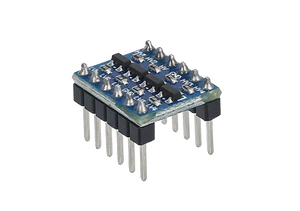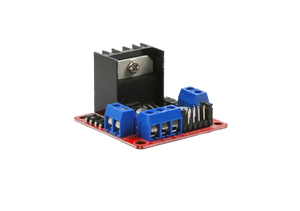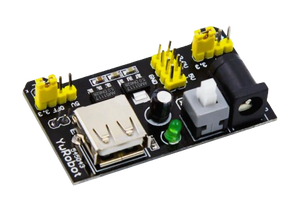
What is the MPU9250 9-Axis Sensor?
The SHILLEHTEK MPU9250 Authentic GY-9250 Pre-Soldered 9-Axis 9 DOF Accelerometer + Magnetometer combines a 3-axis accelerometer, gyroscope, and magnetometer in one compact module. Designed for high-precision motion tracking and orientation sensing, it is compatible with Raspberry Pi, Arduino, ESP32, and other microcontrollers, making it perfect for robotics, drones, wearable devices, and more.
Operating Mechanisms of the MPU9250
The MPU9250 sensor integrates three critical sensing technologies into one module, delivering comprehensive data on movement, orientation, and magnetic fields. Its key functions include:
- Accelerometer: Measures acceleration forces along the X, Y, and Z axes, enabling the detection of linear motion and orientation.
- Gyroscope: Monitors angular velocity, providing precise data on rotational movement.
- Magnetometer: Senses magnetic fields to determine directional heading and orientation.
- Pre-Soldered Convenience: With pre-soldered pins, this module is ready for quick integration with microcontrollers, reducing setup time and simplifying your projects.
By combining these elements, the MPU9250 offers a robust solution for applications that require detailed motion tracking and orientation analysis.
Pins

MPU9250 Pinout
VCC (Power Supply)
This pin supplies power to the sensor. Typically, it accepts 3.3V (and some boards can handle 5V), making it essential to match the voltage to your microcontroller's requirements.
GND (Ground)
The ground pin provides a reference voltage for the sensor. It must be connected to your microcontroller’s ground to complete the electrical circuit.
I2C SCL (Serial Clock)
This pin generates the clock signal for I2C communication. Connect it to the SCL pin on your microcontroller to ensure synchronized data transfer.
I2C SDA (Serial Data)
The SDA pin is responsible for transmitting and receiving data over the I2C bus. Connect this to your microcontroller’s SDA pin.
Auxiliary Data (EDA)
Used for advanced configurations, the EDA pin provides an additional data line for peripheral connections or alternative sensor modes. In most basic setups, this pin isn’t utilized.
Auxiliary Clock (ECL)
The ECL pin supplies a clock signal for the auxiliary interface, typically paired with EDA for specialized applications.
Address Select (AD0 or ASEL)
This pin is used to select the sensor's I2C address. Pulling it low usually sets the address to 0x68, while pulling it high changes the address to 0x69, allowing for multiple devices on the same bus.
Interrupt (INT)
The INT pin outputs an interrupt signal when significant events occur (like data readiness or motion detection). Connect this pin to an interrupt-capable digital pin on your microcontroller for responsive operations.
SPI Chip Select (NCS/CS)
If you opt for SPI communication, this pin is used to select the sensor on the SPI bus. It’s typically connected to the chip select (CS) pin of your microcontroller.
Frame Synchronization (FSYNC)
The FSYNC pin is used to synchronize data sampling with an external event or signal, which can be particularly useful in multi-sensor configurations. In simpler applications, this pin may remain unused.
---
By understanding the role of each pin, you can ensure a correct and efficient connection of the MPU9250 to your projects. Always verify the voltage and wiring requirements with your specific board documentation to prevent any damage and ensure optimal performance.
Technical Specifications
| Specification | Details |
|---|---|
| Accelerometer Range | ±2g/±4g/±8g/±16g (selectable) |
| Gyroscope Range | ±250°/s, ±500°/s, ±1000°/s, ±2000°/s (selectable) |
| Magnetometer Range | ±4900µT |
| Interface | I2C/SPI |
| Operating Voltage | 3.3V (preferred) / 5V compatible |
| Dimensions | Compact module size |



